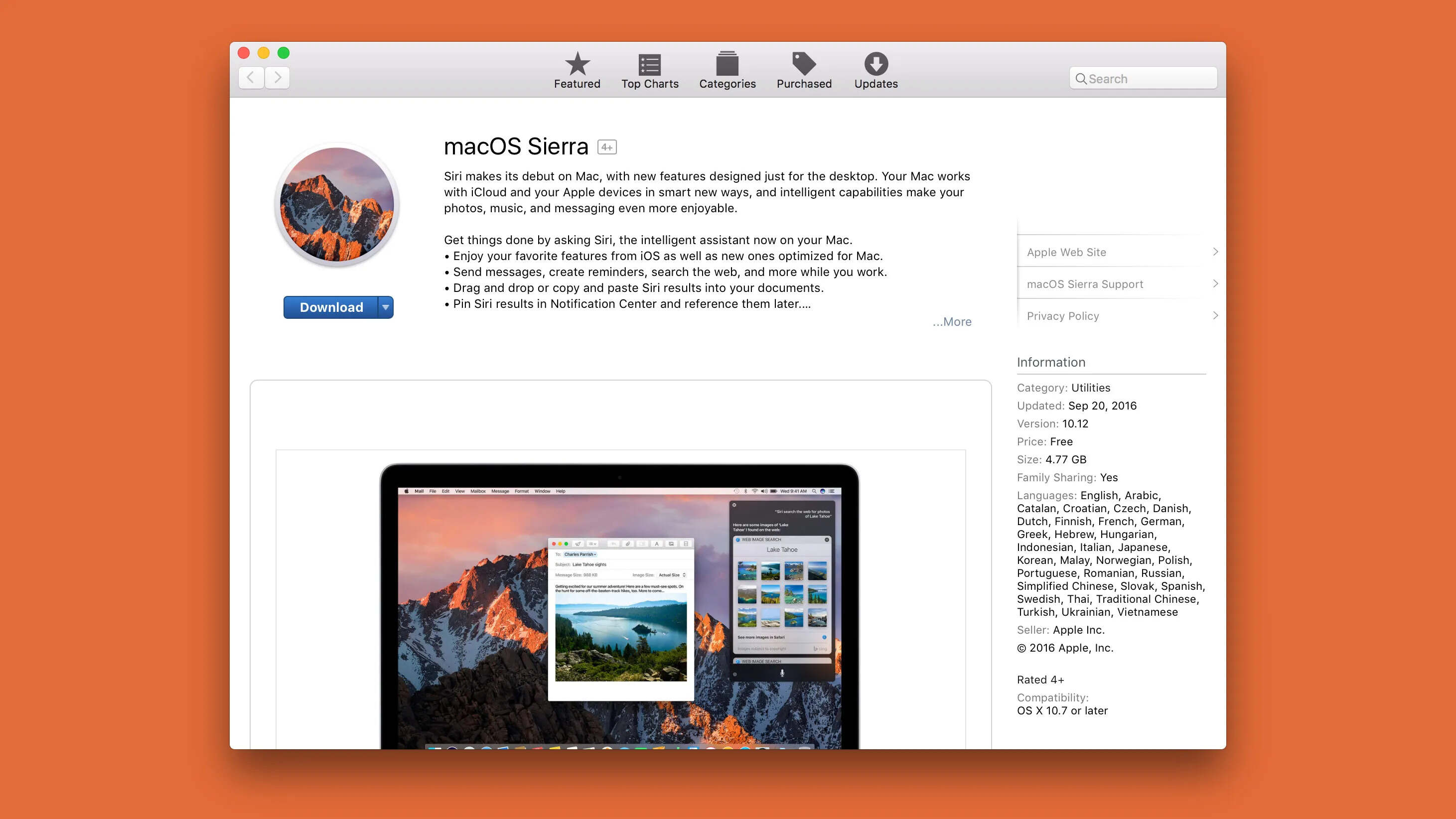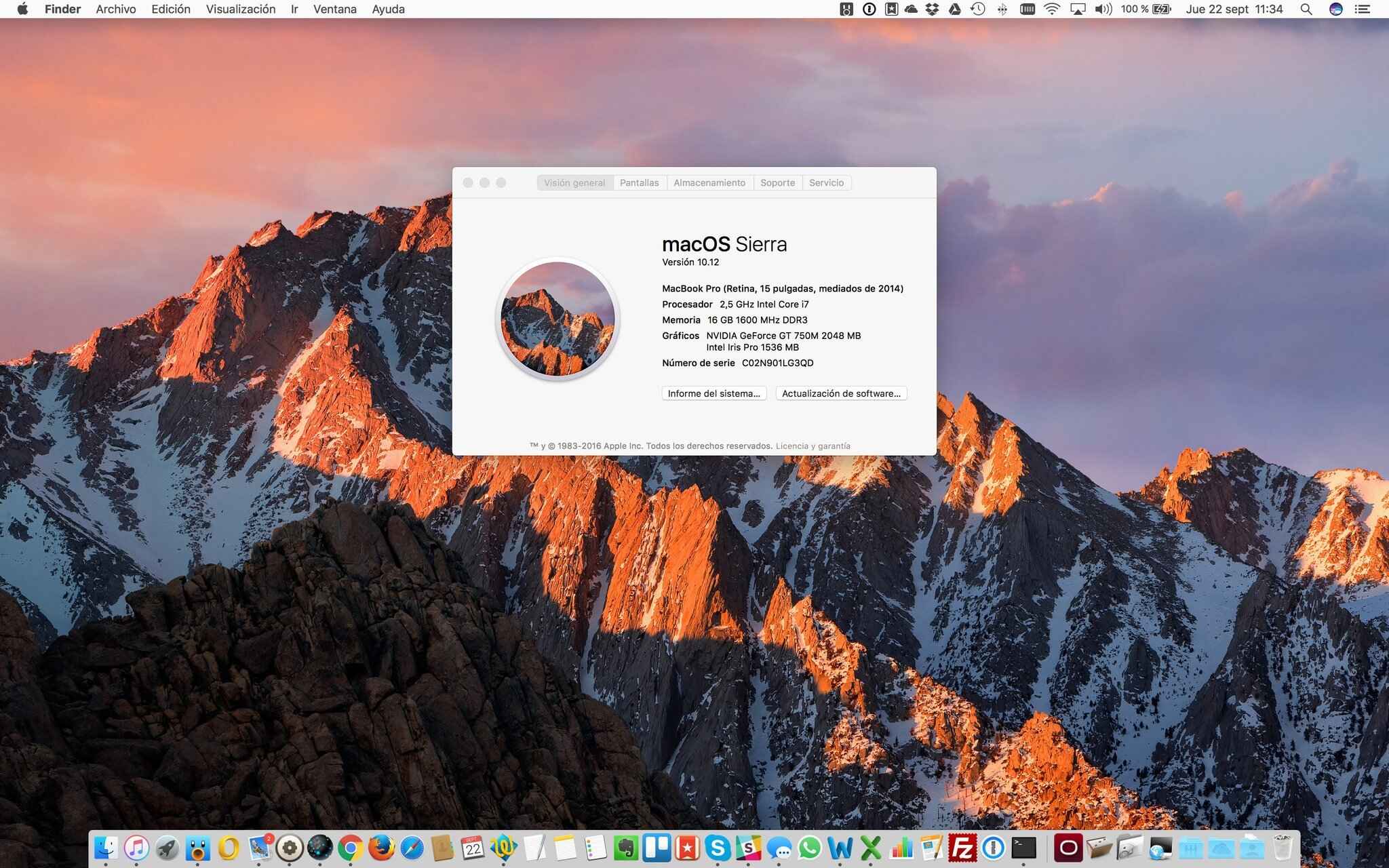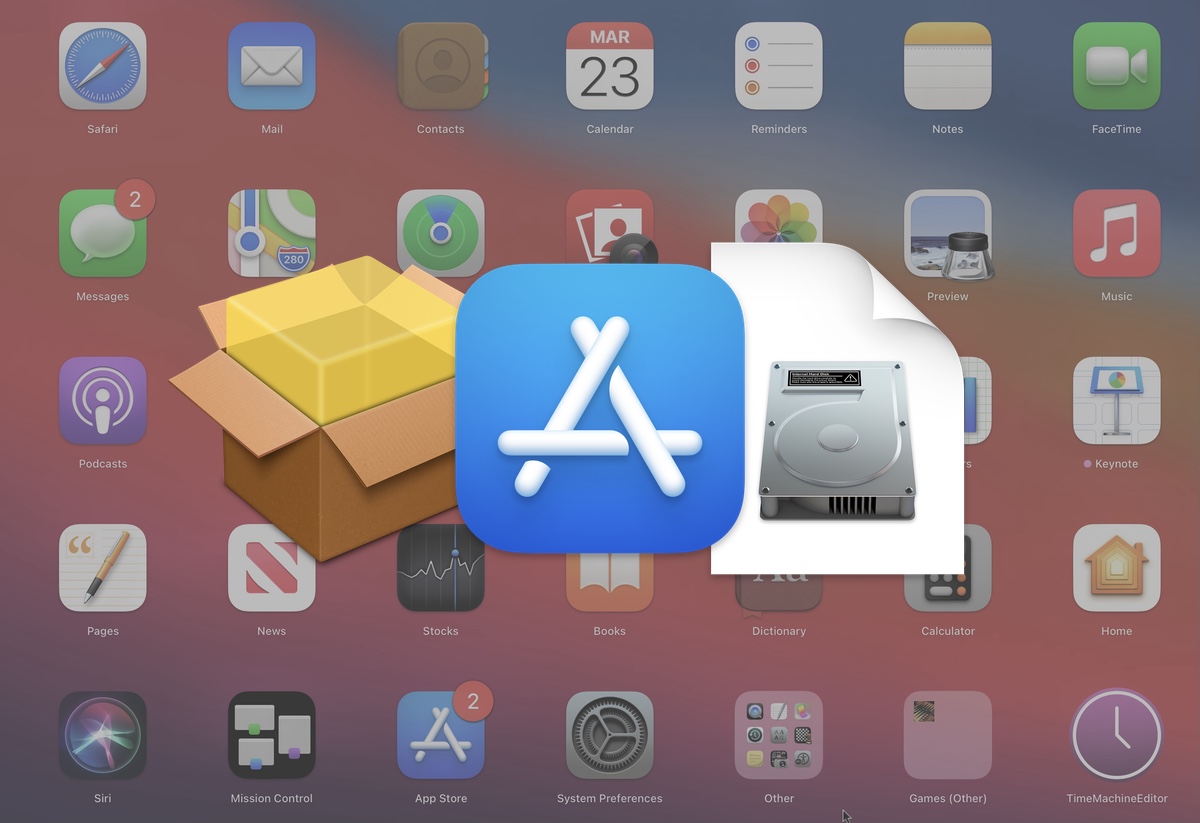Introduction
Downloading files on a Mac is a straightforward process that allows you to access a wide range of content from the internet. Whether you need to download documents, images, videos, or software, understanding how to effectively download on a Mac can save you time and frustration.
In this guide, we will walk you through the step-by-step process of downloading files on your Mac, from configuring your browser settings to managing and organizing downloaded files. We will also discuss common issues you may encounter during the download process and how to troubleshoot them.
It’s important to note that while the specific steps may vary slightly depending on the browser and operating system version you are using, the general download process and principles remain the same. By following the instructions outlined in this guide, you’ll be well-equipped to download files on your Mac with ease.
So, whether you’re a new Mac user or simply looking to enhance your download abilities, let’s dive in and explore the world of file downloads on a Mac.
Step 1: Understanding the download process on a Mac
Before diving into the actual downloading process, it’s essential to have a basic understanding of how the download process works on a Mac. When you download a file, you’re essentially copying it from a remote server to your computer’s local storage.
When you initiate a download, your web browser acts as the intermediary between the remote server and your computer. The browser sends a request to the server, asking for permission to download the file. If the server approves the request, it starts transferring the file in small chunks called packets.
Once your computer receives all the packets, it reconstructs them to create the complete file. The file is then saved to the designated location on your Mac, such as the Downloads folder or a location of your choice.
Now that you have a basic understanding of the download process, let’s move on to the practical steps of downloading files on a Mac. We will guide you through configuring your browser settings, initiating downloads, and managing your downloaded files effectively.
Stay tuned for the next step, where we’ll explore how to configure your browser settings for hassle-free downloads on your Mac.
Step 2: Configuring your browser settings for downloads
Configuring your browser settings appropriately can greatly enhance your download experience on a Mac. Different browsers have their own specific settings, but the underlying concepts remain similar. Here are some key settings to consider:
1. Default download location: One of the first things you should do is set a default download location. By choosing a specific folder, such as the Downloads folder, you can easily locate and organize your downloaded files. To change the default download location, open your browser’s preferences or settings menu and navigate to the download options.
2. Prompt for download location: Some browsers give you the option to choose the download location for each file individually. This can be helpful if you want to save files in different folders based on their type or importance. Enabling the prompt for download location ensures that you are asked to specify the location every time you download a file.
3. Download speed: Browsers often have a limit on the download speed to distribute network resources equitably. However, if you have a fast internet connection, you can increase the download speed by adjusting this setting. Keep in mind that setting it too high may impact your browsing experience for other tasks.
4. Safe download warnings: Browsers have built-in security measures to protect you from downloading potentially harmful files. You can choose to receive a warning when downloading files that may contain malware or viruses. This helps you make informed decisions about whether to proceed with the download or not.
5. Download history: Browsers keep a record of your download history, making it easier to find and track previously downloaded files. You can access your download history through the browser’s menu or shortcuts. This feature is especially useful when you need to retrieve a specific file that you downloaded in the past.
Remember, the steps to configure these settings may vary slightly depending on your browser. Refer to the browser’s documentation or online resources for detailed instructions specific to your browser of choice. With your browser settings properly configured, you’re now ready to move on to the next step: downloading files from the internet.
Step 3: Downloading files from the internet
Now that you have configured your browser settings, it’s time to dive into the process of downloading files from the internet on your Mac. Whether you’re downloading documents, images, videos, or software, the steps are generally the same across different browsers. Here’s a general guide to help you download files:
1. Find the file: Start by locating the file you want to download on a webpage. It could be a hyperlink or a download button associated with the file. Click on the link or button to initiate the download process.
2. Choose the download location: Depending on your browser and settings, you may be prompted to choose the download location for the file. If you have set a default download location, the file will automatically be saved there. Otherwise, you can select a specific folder or location to save the file.
3. Monitor the download: Once the download starts, you will typically see a progress indicator showing the download status. The time it takes to complete the download depends on the size of the file and your internet connection speed. You can usually pause, resume, or cancel the download if needed.
4. Open or access the downloaded file: Once the download is complete, you can open the file directly from the browser or navigate to the download location and access it from there. Depending on the file type, your Mac may open it with the appropriate default application or prompt you to choose an application to open it with.
5. Verify the downloaded file: It’s a good practice to verify the integrity of downloaded files, especially if they are software or executable files. Some browsers provide built-in mechanisms to check the file’s digital signature or hash value for authenticity. Additionally, you can use third-party antivirus software to scan downloaded files for potential threats.
By following these steps, you can confidently download files from the internet onto your Mac. However, keep in mind that some websites may have specific download procedures, such as requiring you to log in or complete a captcha. Pay attention to any additional instructions or requirements provided by the website to ensure a successful download.
In the next step, we’ll explore how to manage and organize your downloaded files effectively on your Mac. Stay tuned!
Step 4: Managing and organizing downloaded files
Downloading files is just the first step; managing and organizing them effectively is crucial for easy access and a clutter-free Mac. Here are some tips on how to manage and organize your downloaded files:
1. Clean up your Downloads folder: Over time, your Downloads folder can become overcrowded with files. It’s a good practice to regularly clean up this folder by deleting files you no longer need or moving them to appropriate locations. Sort the files by date modified and review them to determine which ones can be removed or organized.
2. Create folders for different file types: To better organize your downloaded files, create separate folders based on file types. For example, you can have folders for documents, images, videos, and software. Move files into these respective folders to keep them well-organized and easily accessible.
3. Rename files with descriptive names: Sometimes, downloaded files have generic or cryptic names. Renaming them with descriptive names can help you quickly identify the contents without having to open each file. Use meaningful names that reflect the file’s content or purpose.
4. Utilize tags or labels: Tagging or labeling your downloaded files can be an effective way to categorize and retrieve them quickly. Most Mac operating systems offer the option to add tags or labels to files. You can assign tags based on project, priority, or any other system that suits your needs.
5. Backup your downloaded files: It’s essential to regularly back up your downloaded files to prevent data loss. Consider using external drives, cloud storage services, or backup software to create a backup of your files. This ensures that even if your Mac malfunctions or experiences data loss, your downloaded files remain safe and recoverable.
By implementing these strategies, you can effectively manage and organize your downloaded files on your Mac. Maintaining a clutter-free system not only improves productivity but also makes it easier to locate specific files when needed.
In the final step, we’ll discuss common download issues and how to troubleshoot them. Stay tuned for some helpful tips!
Step 5: Troubleshooting common download issues
While downloading files on a Mac is usually a smooth process, there can be occasional hiccups or issues that may hinder the download experience. Here are some common download issues you may encounter and how to troubleshoot them:
1. Slow download speed: If you notice that your downloads are taking an unusually long time, it could be due to various factors. First, check your internet connection to ensure it’s stable. If the issue persists, try pausing and resuming the download to reset the connection. Alternatively, restart your router or modem to improve your connection speed.
2. Failed downloads: Sometimes, downloads may fail or get interrupted before completion. This can happen due to a poor internet connection, server issues, or timeouts. Try restarting the download and ensure that you have a stable connection. If the problem persists, try a different browser or contact the website or server administrator for assistance.
3. Blocked downloads: In some cases, certain files may be blocked by your antivirus software or built-in browser security settings. Check your security settings and temporarily disable any restrictions or blocking mechanisms. Be cautious when downloading files from unknown or untrusted sources, as they can potentially contain malware or viruses.
4. Incorrect file extensions: Occasionally, files may have incorrect or missing file extensions, which can make it difficult to open or access them. If you encounter this issue, try manually adding the correct file extension to the downloaded file. For example, if you downloaded an image without an extension, rename it to include the appropriate image extension (.jpg, .png, etc.) for it to be recognized by compatible software.
5. Insufficient disk space: If your Mac’s storage is nearly full, it can affect the download process. Check your available disk space and ensure that you have enough storage to accommodate the downloaded file. Consider freeing up disk space by removing unnecessary files or transferring them to external storage devices.
By troubleshooting these common download issues, you can overcome obstacles and ensure a smooth download experience on your Mac. However, if the problem persists or if you encounter other specific issues, consult online forums, Apple support, or relevant community resources for further assistance tailored to your situation.
With the troubleshooting steps covered, we’ve reached the end of our guide on downloading on a Mac. By following the steps outlined in this guide, you can confidently navigate the download process, manage your downloaded files effectively, and resolve common issues that may arise along the way. Happy downloading!
Conclusion
Downloading files on a Mac is a fundamental task that allows you to access a variety of content from the internet. By understanding the download process, configuring browser settings, and effectively managing your downloaded files, you can streamline your workflow and enhance your overall Mac experience.
In this guide, we explored the step-by-step process of downloading files on a Mac. We discussed the importance of understanding the download process, configuring browser settings for optimal downloads, and managing and organizing downloaded files efficiently. We also covered troubleshooting common download issues that you may encounter along the way.
Remember to keep your browser settings updated and tailored to your preferences. Regularly clean up your Downloads folder and organize your files into appropriate folders for easy access. Backup your downloaded files to prevent data loss and ensure peace of mind.
Should you encounter any issues during the download process, be proactive in troubleshooting by checking your internet connection, adjusting security settings, and resolving any potential conflicts.
By following the tips and guidance provided in this guide, you are equipped with the knowledge and strategies to make your download experience on a Mac efficient, organized, and hassle-free. Enjoy the benefits of easy access to downloaded files and a clutter-free system.
Thank you for choosing this guide as your resource for downloading on a Mac. Happy downloading!

























